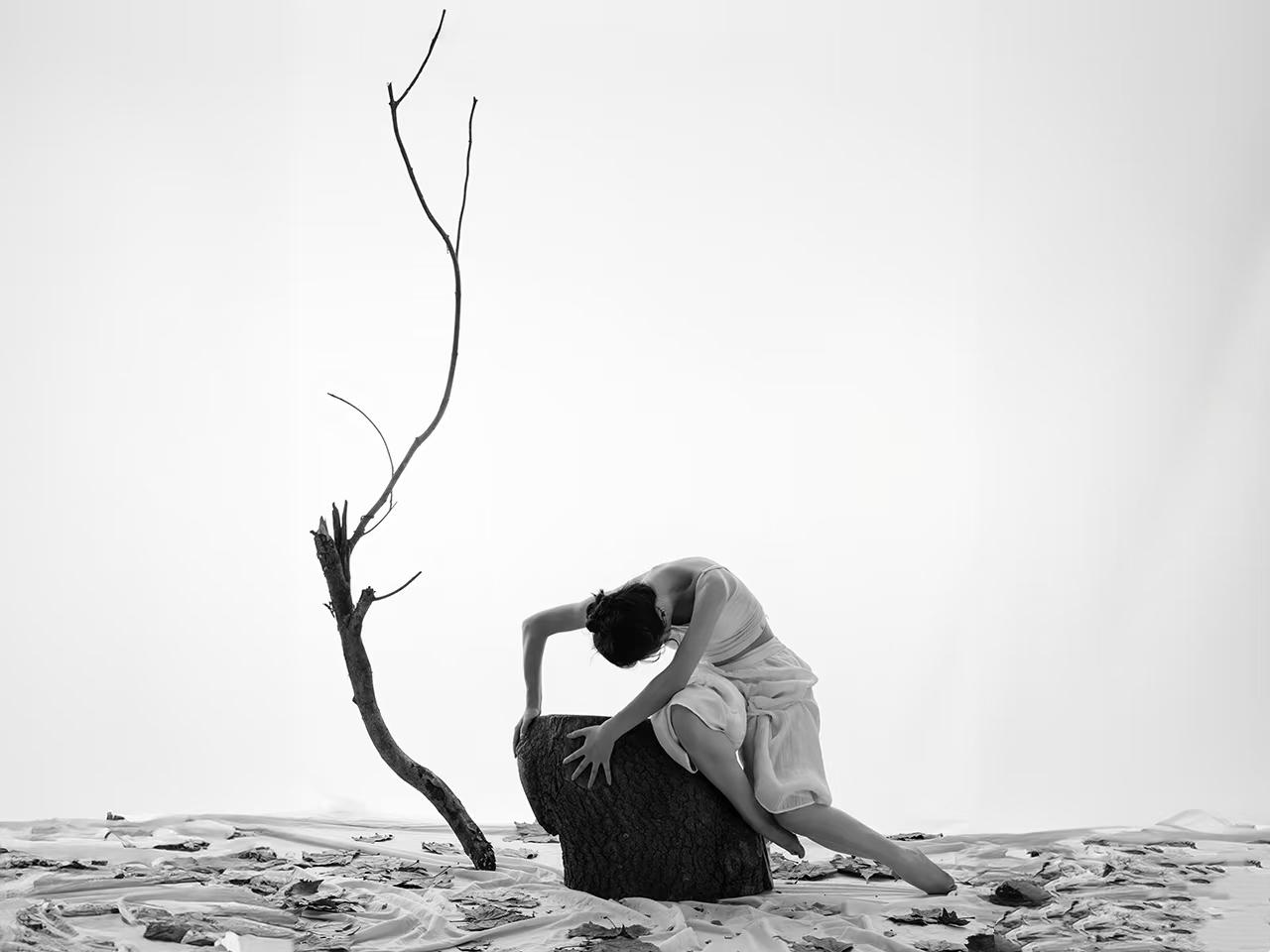Presented at Wandsworth Arts Fringe 2025, London.
Working on the Edge of Consciousness, a dance theatre work, choreographed by Danlei Xu, a dance artist originally from China. She invites the audience into a landscape of restrained movement and quiet reflection. The work unfolds like a meditation, focused less on narrative or structure than on the internal resonance of gesture. Movements emerge slowly: a turn of the wrist, a shift of weight, a breath that ripples through the body. These small details accumulate, forming a rhythm closer to breathing than phrasing. Stillness becomes the work’s central tension — a space in which the line between thought and motion begins to blur.
Presented as part of the Wandsworth Arts Fringe 2025, one of London’s most eclectic and inclusive multi-arts festivals, the performance takes its place within a programme that champions artistic experimentation and accessibility. Known for transforming everyday spaces across the borough into creative stages, the festival provides a platform where emerging and established artists alike can test new ideas and reach wider audiences. Within this context, Working on the Edge of Consciousness reflects the Fringe’s spirit of curiosity and openness — a commitment to works that blur boundaries between art forms and invite audiences into more intimate, reflective experiences of performance.
Rooted in the aesthetics of Chinese modern dance, the choreography draws on traditions that privilege introspection over theatrical display. Power arises from softness; energy is contained rather than projected. The spiralling pathways of the arms and finely calibrated shifts of balance reveal a dancer attuned to both precision and emotion. The result is a vocabulary that feels minimal yet deliberate, elegant in its restraint.
The work’s strength lies in its quietness. It embodies an aesthetic of control, where pauses speak as clearly as movement. This approach aligns with the lineage of Chinese contemporary dance — a form shaped by the philosophy of breath, balance, and the awareness of emptiness. The performance doesn’t strive to impress; it invites attention, asking the viewer to perceive subtleties often missed in louder, more extroverted choreography.
Yet this same restraint exposes a limitation. The piece offers atmosphere more than progression, existing largely within a single emotional tone. Without shifts in rhythm or dynamic contrast, its meditative pace risks becoming static. The choreography achieves intimacy through understatement but rarely ventures into conflict or transformation. It evokes feeling, but the absence of dramatic tension leaves the audience hovering in reflection rather than engagement.
Visually, the staging maintains the same economy as the movement — bare space, gentle light, an unhurried sense of time. The simplicity enhances the meditative quality but also demands patient viewing. What the performance gains in clarity, it sometimes loses in momentum. For those accustomed to narrative structure, the work may seem elusive; for others, it offers an invitation to dwell in perception itself.
Working on the Edge of Consciousness is less a story than a study — of presence, attention, and the delicate boundary between control and release. It embodies a distinctively Eastern sensibility, where silence holds weight and meaning emerges through restraint. The performance lingers like a whisper: subtle, disciplined, and quietly self-assured.


